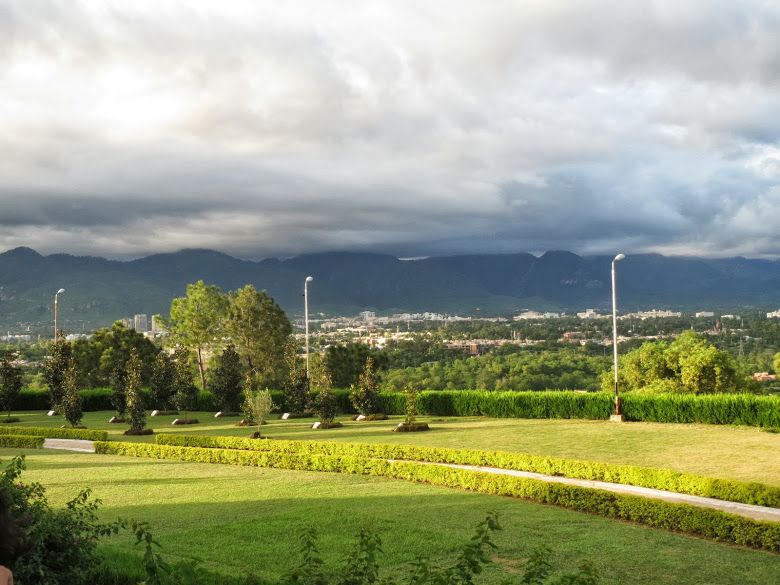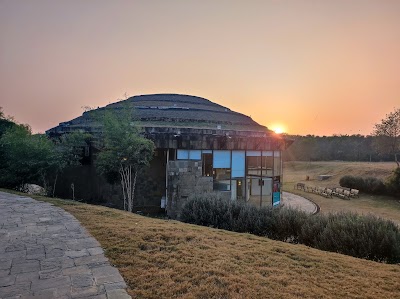Lok Virsa Museum (لوک ورثہ میوزیم)
Overview
The **Lok Virsa Heritage Museum**, often referred to as the Lok Virsa Museum, is a cultural gem nestled in the heart of Islamabad, Pakistan's capital. This museum stands as a tribute to the rich and diverse heritage of Pakistan, celebrating the country's multi-ethnic roots, traditions, and artistic crafts.
The concept of the museum originated in the early 1970s, spearheaded by the Lok Virsa (National Institute of Folk and Traditional Heritage). This government organization was established to preserve and promote Pakistan's cultural heritage. Although the museum officially opened its doors in 1974, its development has been a continuous journey, with ongoing efforts to expand its collection and facilities.
Creating the museum was no small feat; it involved extensive research and collaboration among scholars, historians, and artisans from across the nation. Their collective efforts were aimed at crafting an authentic experience that accurately reflects the cultural mosaic of Pakistan. Traditional artisans and craftsmen employed age-old techniques to build various sections of the museum, and the architecture itself is a beautiful amalgamation of traditional Pakistani styles from different regions.
The Lok Virsa Museum is an expansive complex featuring multiple galleries that showcase a stunning array of artifacts. Upon entering, visitors are welcomed by a vibrant panorama of Pakistani culture. The galleries are thoughtfully divided by themes and regions, each revealing a unique part of Pakistan’s rich cultural tapestry.
One of the museum's highlights is the **Hall of Heritage**, which displays traditional attire, intricate jewelry, and everyday household items from across the country. This gallery allows visitors to appreciate the craftsmanship and cultural significance behind each piece. Live demonstrations by artisans working on traditional crafts offer an insightful glimpse into the skills and techniques that have been passed down through generations.
Another must-see section is the **Pottery and Ceramic Gallery**, showcasing exquisite pottery from various regions of Pakistan. Notably, it features the stunning blue pottery of Multan, renowned for its unique cobalt blue hue and intricate designs. Informative displays in the gallery delve into the history and methods behind these beautiful works of art.
The **Textiles Gallery** offers an immersive look into Pakistan’s diverse textile heritage. Visitors can explore traditional fabrics such as Sindhi ajrak, Balochi embroidery, and Peshawari chappal. This gallery highlights the various weaving and dyeing techniques that showcase the immense talent and meticulous attention to detail involved in textile production.
Additionally, the museum features several life-sized dioramas that recreate vibrant rural scenes, including bustling marketplaces and artisans at work. These dioramas provide a fascinating insight into the lifestyle and traditions of Pakistani communities.
What sets the Lok Virsa Museum apart is its commitment to interactive and engaging experiences. The museum regularly hosts cultural events, folk music performances, and craft fairs that bring Pakistan’s living traditions to life. Visitors often have the chance to participate in workshops, where they can learn traditional crafts directly from master artisans.
The museum also houses a library and archives known as the **Pakistan National Museum of Ethnology**, which contains an extensive collection of books, manuscripts, recordings, and photographs. These invaluable resources are perfect for researchers and anyone interested in exploring Pakistan's ethnological and cultural history.
As a dynamic and evolving institution, the Lok Virsa Museum continually expands and enhances its exhibits. Efforts are ongoing to integrate modern technology, such as interactive displays and audio-visual guides, to enrich the visitor experience further.
Supported by government funding and donations from cultural organizations and the public, the Lok Virsa Museum stands as a testament to Pakistan’s dedication to preserving and celebrating its cultural heritage. It serves not only as a repository of the past but also as a vibrant center where the country's traditions and artistic expressions can flourish and be passed down to future generations.








